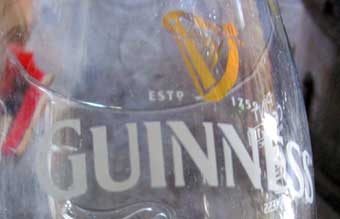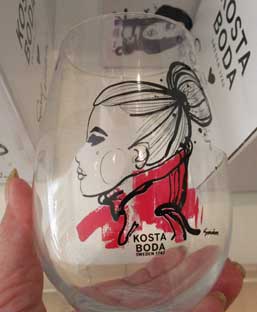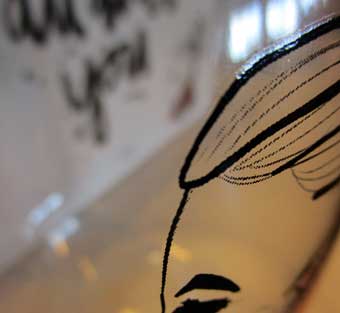
| VISIT US |
Bergdala glastekniska museum
|
|

|
||
|
För andra språk erbjuder vi/ for other languages we offer
- Acid etching - To stain and to lustre - (Sand) Blasting - Decals for decoration |
|
Decals for decoration, almost like paintedStill, most of the exclusive painted glass is done by hand - more about that in another place, later. |
||
|
But: what if all promotional glasses had to be hand-painted?
That would be the end of them...
There is another method better suited for mass-production of colour-decorated glass:
|

|
|||
|
The decals are produced by screen printing: A film with the decal is illuminated and exposed onto a frame with a special light sensitive
layer. After exposure and development, the frame contains a cloth, a stencil, which is covered where print is not to be applied and
permeable where the pattern is. One template is needed for each colour of the decal. A special paper is used and the pattern is printed,
one colour at a time. Once the colours are dry a coating lacquer is applied that allows the transfer of the decal from the paper.

|
||||
|
Once the lacquer is hardened the paper is soaked in water to dissolve the paper. The lacquer layer will now contain the print as a sticker and this is then applied (by hand) to the glass after which the glass is allowed to dry completely. Finally, the glass is heated in an oven where the lacquer is burnt away, and the stoving varnish adheres to the glass. 
|
||||
|
The very same techniques is used to decorate porcelain. While porcelain is baked at 800 degrees, a lower temperature is used for glass since it might soften and loose its shape such a high temperature. |
||||
|
As mentioned above, stickers are sometimes used for more exclusive glass.
One such example is the series All about you from Kosta-Boda (design Sara Woodrow).
By looking very carefully, sometimes one can see the edge of the decal.
|

|

|
||
|
Stoving varnish in the form of stickers can also be used in combination with manual "Graal" art-glass production.
In that case the decorated glass post will be the starting point onto which is then collected clear glass. After that, the final blowing and shaping commences just like with any other Graal. There are probably persons who would see that as "cheating". Below a quote from Ulla-Carin Bergqist (granddaughter of the legendary Knut, the man who developed the Graal method): (unauthorized translation...) Ha, ha... cheating? The Graal technique is about making patterns inside the glass, a way to enclose the pattern between the walls of the glass. When Grandfather envisioned the technique, that was one of the goals: to get away from the sharp edges that etching, engraving etc created when it was applied to the surface of the glass. Thus, there are no rules about how one relates to the [starting point for the] Graal piece (and there were no stoving varnish at the time). If talking about craftmanship, the stickers are easier to handle, but if it is about art - "the air is free"?? For me, it is more about curiosity of new techniques and possibilities to create something exciting. Look at Per B Sundberg - his graals using this technique are fantastic! For his first, he made the stickers from gift wrapping paper.(and, today, we will not get nearer to the original source...) |
||||